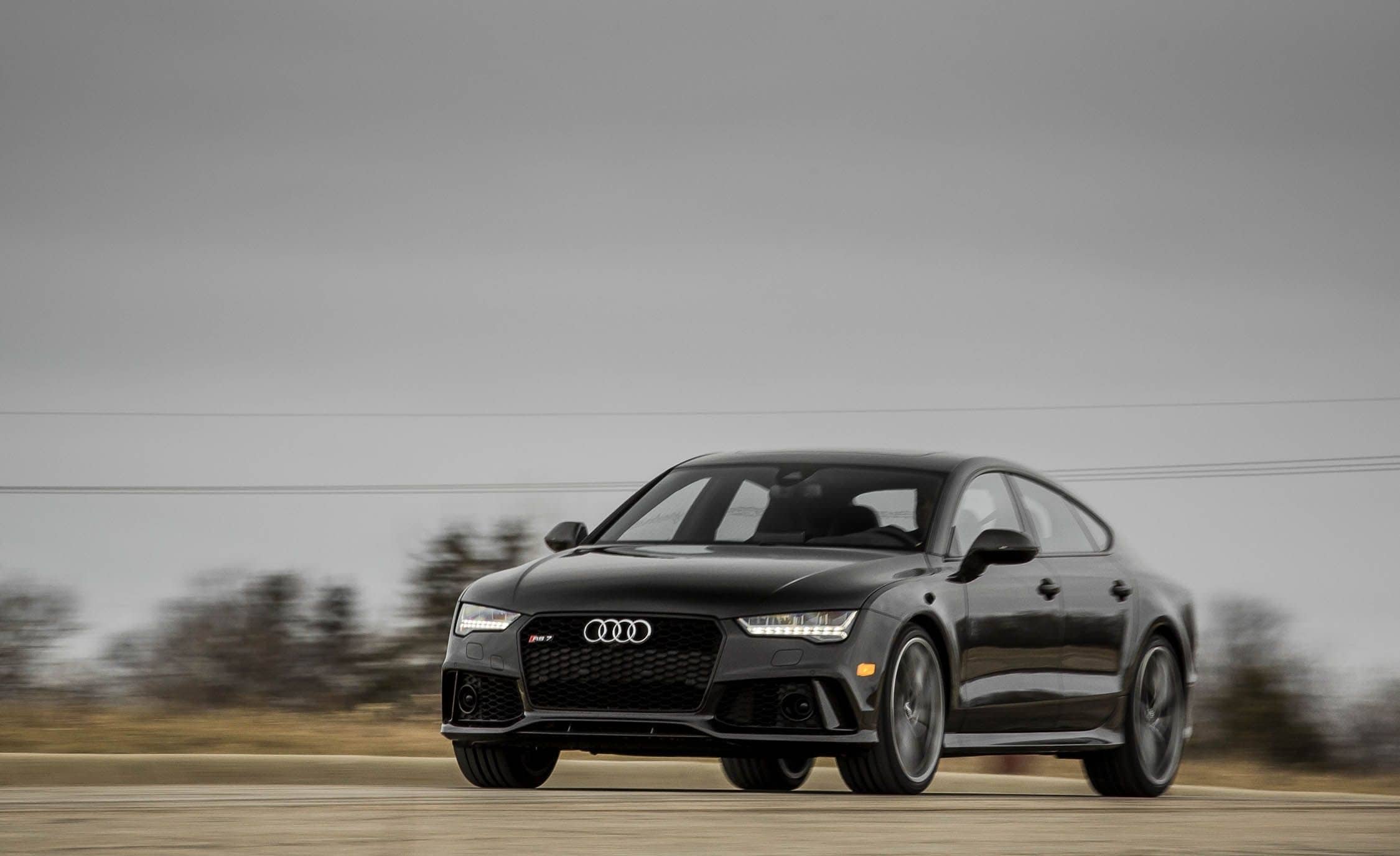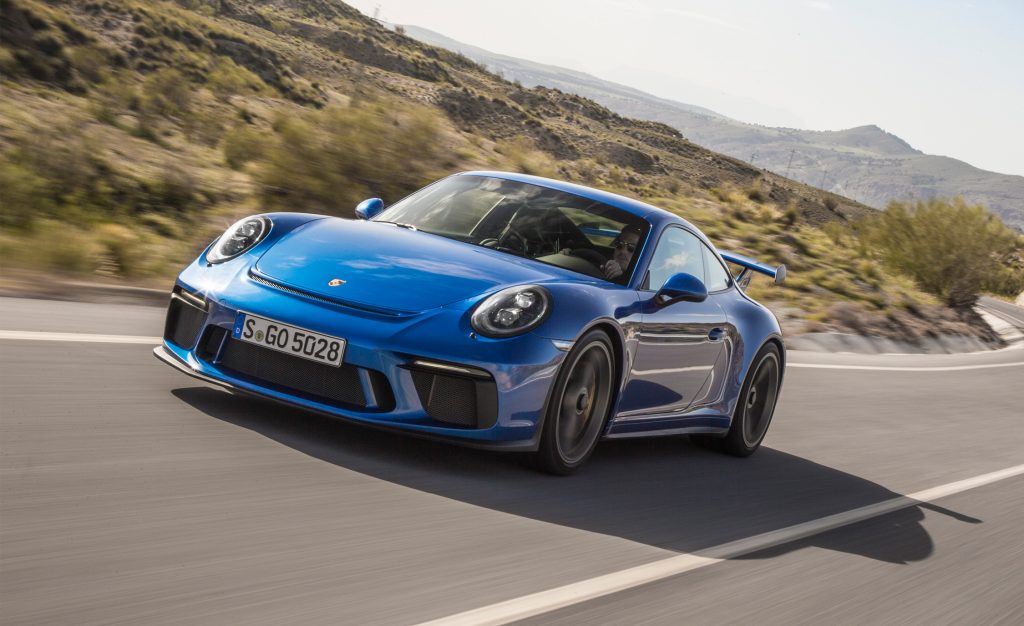
MERCEDES-BENZ ENERGY HOME BATTERY SYSTEM LAUNCHES IN THE UK, AUSTRALIA TO FOLLOW SHORTLY
April 28, 2017
2017 Audi RS7 Performance Test | Review
May 4, 2017The true genius of Porsche’s new GT3, the second coming of the model on the 991 platform, is that even a master will never fully exploit it. That’s the trait that defines the GT3, not just among Porsches but among the world’s best drivers’ cars. As a result, it engenders fascination like almost nothing else. No matter how hard it’s pushed, there’s still magic to be discovered in its responses, beauty in its feedback, joy in its abilities. This is a machine whetted on the mill of necessity and unencumbered by frippery. It is noise and feel and heat and speed wrapped into a physically absurd package then distilled beyond what its design merits.
The cumulative case it makes is this: When a driver unloads aggression into its controls, it doesn’t balk. It doesn’t plead for mechanical mercy. From its perspective, driving with purpose differs not at all from driving for pleasure. When much is asked of the GT3, it simply goes faster. It goes faster and then, like a bitterly defiant teenager, it doubles down, betting that what it can endure exceeds what you can supply. That is a profoundly fantastic thing for a sports car to do.
All I Ask Is a 911 and a Stonking Flat-Six to Power Her By
A big part of the latest GT3’s magic is conjured by its engine, a wicked, ripping salute to all that is right with flat-sixes and natural aspiration. A new version of the 9A1 4.0-liter six-cylinder from the now dead GT3 RS, it replaces the old GT3’s 3.8-liter mill, and this 9000-rpm stomper is wholly updated and more alive than ever. Compared with the 9A1, the 9A1.5 has a new crankshaft, valvetrain design, lubrication system, and intake manifold, and it revs 200 rpm higher. Larger main and rod-bearing journals allow for a stiffer crankshaft, which reduces wear on the main bearing closest to the rear of the car. The downside is a crank with different resonance characteristics, which demands a heavier dual-mass flywheel to reduce vibration.
Solid valve lifters, which Porsche says won’t need adjustment in any fewer than 150,000 miles, replace the old engine’s hydraulic lifters. Eliminating the higher oil pressure and volume needed to operate the hydraulic lifters, together with lower-rate valve springs, frees up as much as eight or nine horsepower. The engine’s dry-sump system uses a new oil pump and seven scavenge pumps and a new pressure pump for lubrication. A redesigned plastic intake manifold adds a second flap to boost torque and response at low- and mid-range engine speeds. At 500 horsepower and only 339 lb-ft of torque, it is, by supercar standards, a relative wimp. Until you actually step on the accelerator.
Numbers Are Neat—Experiences Are Better
If ever there were a case for words before numbers, this is it. There’s more character lurking in this engine’s final 1000 rpm than there is in the entire rev range of the turbocharged engines powering various competitors. It’s unapologetic about its racing heritage and doesn’t brook driving mistakes without retribution. Neither does it ride a thunderhead of torque like a turbo engine. Miss an apex, slide wide, or drop a wheel and you’re not getting that time back. There’s no crutch here, no papering over your errors. If you’re uncomfortable above 6000 rpm, this isn’t your Porsche. Because this is an engine that won’t stop pulling until your cochleae burst into flame. This is an engine bred for Daytona, Sebring, and Le Mans, and it makes you earn everything you get.
Oh, and the GT3 also is available with three pedals. Porsche, in a move that reverses the performance-at-all-cost ethos introduced with the first dual-clutch-only 991 GT3 for 2014, throw enthusiasts a bone in version 2.0. But like the electrifying 911 R before it, the 991.2 GT3 gets only six cogs, which saves seven pounds relative to the seven-speed manual found in other 911s. It also gets reinforced shift stops and a gear lever that’s 0.8 inch shorter. Porsche, with a straight face, offers the stick as a no-cost option. The seven-speed PDK, which shares the manual’s ratios in its first four gears, is standard. Both transaxles incorporate limited-slip differentials, which is electronically controlled with the PDK.
A taller rear wing, larger front splitter, and new underbody panels increase downforce to a claimed 342 pounds at top speed (198 mph for the PDK, 199 for the manual). The GT3 shares its fat-haunched body with the current Carrera 4 and 4S, making it 1.7 inches wider at the rear fenders than the current Carrera. It’s also about an inch lower. And get this: As if to drive home this car’s laser focus on performance, carbon-fiber hinges for the rear decklid save two pounds.
Friendly Is as Friendly Does
Michelin Pilot Sport Cup 2 rubber in standard 911 sizes (245 up front, 305 out back) were fitted to every example we drove, although Dunlop Sport Maxx Race 2 rubber also is homologated for the car. The steering is relatively light and supremely direct but lacks communication as understeer approaches. It speaks—but sometimes only in a mumble. The result is less confidence in front grip than is offered by, say, a Corvette Grand Sport. Again, there’s nuance here. Change your driving and the GT3 changes its personality. Turn in later, or slower. Transition more quickly to the brakes. Throw it into the corner harder. You’ll get a new result. You adjust, it adjusts. In this Porsche, there are options for how you handle it. But no matter what you do, it won’t surrender. As long as there’s fuel in the tank and rubber on the road, the GT3 is faithful.
Only Porsche can produce a car offering such compliance coupled with carefully metered control. Go ahead, charge fully committed through undulations, ignore small road imperfections. You’ll feel them, but they don’t matter. There’s more compression travel than the GT3’s ride height may lead you to believe. And the only thing fatiguing about the optional carbon-ceramic brakes is their $9210 asking price. Speaking of price, this GT3 will start near $146,000, about 12 grand more than the previous GT3, when it hits dealers this fall.
The most stunning properties of the GT3 are its refusal to fade, connection to the driver, and understated purposefulness. Sure, it has a big wing, but its aesthetics largely lean on a relatively ubiquitous shape, and it’s a car we’d gladly drive daily. That this particular flavor of 911 requires great care to get right is central to its allure. That trait makes it desirable because it demands that its driver be fully involved rather than merely entertained. And that, in any car, is genius.
Source: caranddriver.com


